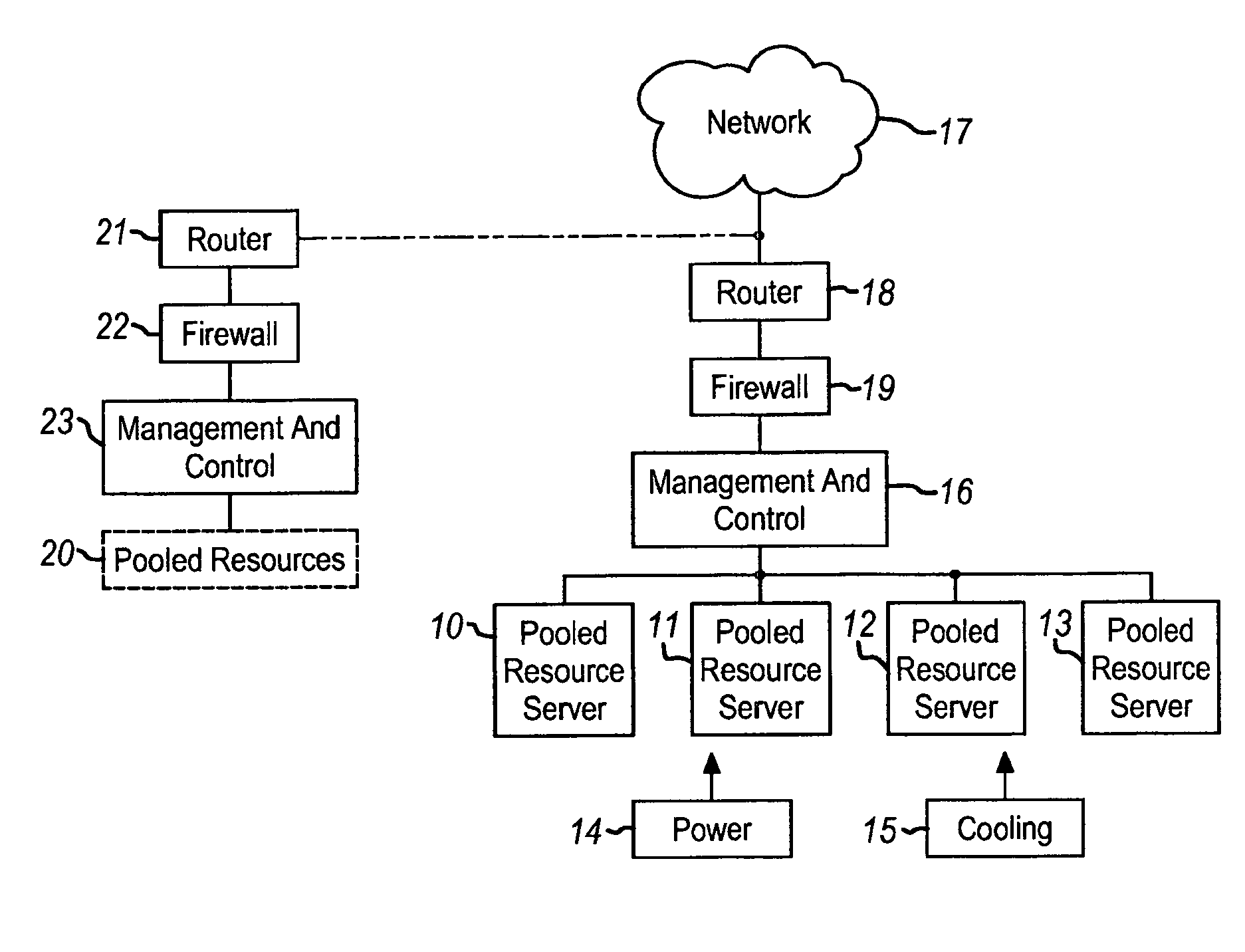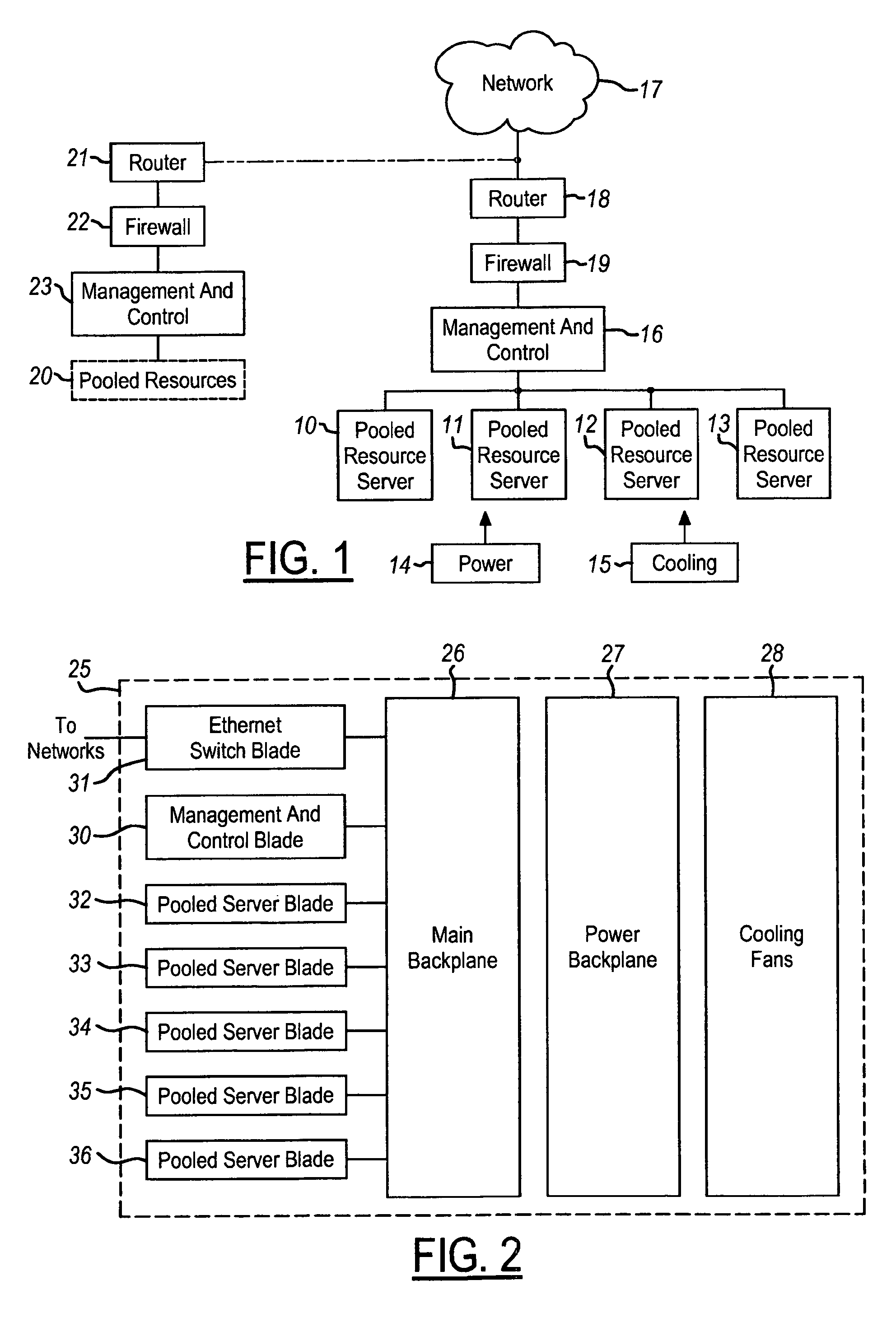Predictive processing resource level control
a technology of processing resource and control, applied in the field of minimizing electrical power consumption, can solve the problems of increasing power hungry and hot, affecting the quality of service of service providers utilizing pooled computing resources, and affecting the electrical power consumption and heat production of service providers, so as to reduce electrical power consumption and not affect the quality of servi
- Summary
- Abstract
- Description
- Claims
- Application Information
AI Technical Summary
Benefits of technology
Problems solved by technology
Method used
Image
Examples
Embodiment Construction
Referring now to FIG. 1, a plurality of pooled resource servers 10-13 receive electrical power from a power source 14 and are cooled by a cooling system 15 (which may include a room air conditioning system). A management and control resource 16 makes the computing services of pooled resource servers 10-13 available to remote users via network 17. A router 18 and a firewall 19 are used to couple management and control resources 16 to network 17. Management and control resource 16 performs a load balancing function for directing service requests received from network 17 to the pooled resources in a distributed manner. In a preferred embodiment of the present invention, management and control resource 16 remotely controls the on or off states of pooled resources 10-13 such that excess resources are not activated and yet QoS levels are maintained by activating resources prior to expected load increases in a predictive manner.
As described below, predicted load variations are determined u...
PUM
 Login to View More
Login to View More Abstract
Description
Claims
Application Information
 Login to View More
Login to View More - R&D
- Intellectual Property
- Life Sciences
- Materials
- Tech Scout
- Unparalleled Data Quality
- Higher Quality Content
- 60% Fewer Hallucinations
Browse by: Latest US Patents, China's latest patents, Technical Efficacy Thesaurus, Application Domain, Technology Topic, Popular Technical Reports.
© 2025 PatSnap. All rights reserved.Legal|Privacy policy|Modern Slavery Act Transparency Statement|Sitemap|About US| Contact US: help@patsnap.com



